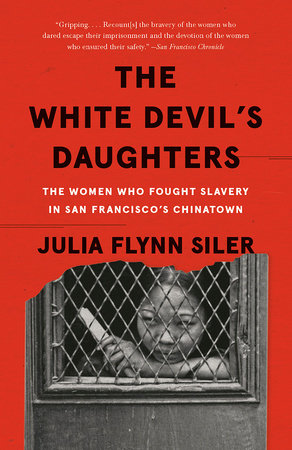The White Devil’s Daughters Reader’s Guide
By Julia Flynn Siler


1. Let’s discuss the title and the epigraph. What does each of them mean?
2. Before reading this book, were you aware of the history of sex-trafficking of Chinese immigrants? Do you feel it’s an important story for us to know? Why yes or why no?
3. Before reading this book, were you aware of the exclusion laws that barred many Chinese from immigrating to the US during the late 1800’s/early 1900’s? Knowing about them now, what are your thoughts?
4. Let’s discuss the factors that enabled sex-trafficking to thrive. And let’s discuss the people who enabled it to thrive. Can we relate any of this to present-day sex trafficking? What cultural norms, both in China and the US, encouraged it? Do these cultural norms still exist?
5. How do you feel about the various churches/religious people who worked to help save the victims? What do you think their primary agendas were? Does it matter? What good came out of their work besides helping the victimized women? Did anything negative result from their work?
6. Against the backdrop of recent protests over racial justice, how does the safe house at 920 Sacramento Street fit into the fight against racism in the U.S.?
7. How do you feel about prostitution? Do you feel it should be legal? Why yes or why not?
8. Let’s talk about the corruption of the officials in San Francisco. What are your thoughts on this?
9. Illegal immigration and sex trafficking are inextricably linked in this story, as they often are in present times. How does one solve this dilemma?
10. What enabled the women who were able to escape and help other victims do so?
11. Before now, most historians have focused on Dolly Cameron while ignoring the role of Tien Fuh Wu and the other Chinese activists who furthered the home’s mission. Why did this happen? How did Siler counter this narrative?
12. Chinese immigrants suffered from racist policies and actions in the United States, but some Chinese immigrants also committed crimes, as the verdict in the Broken Blossoms case showed, As readers, how do we reconcile these two realities?
13. Which characters did you connect with? Who were you inspired by?
Questions provided courtesy of LiteraryMasters.net.
Just for joining you’ll get personalized recommendations on your dashboard daily and features only for members.
Find Out More Join Now Sign In